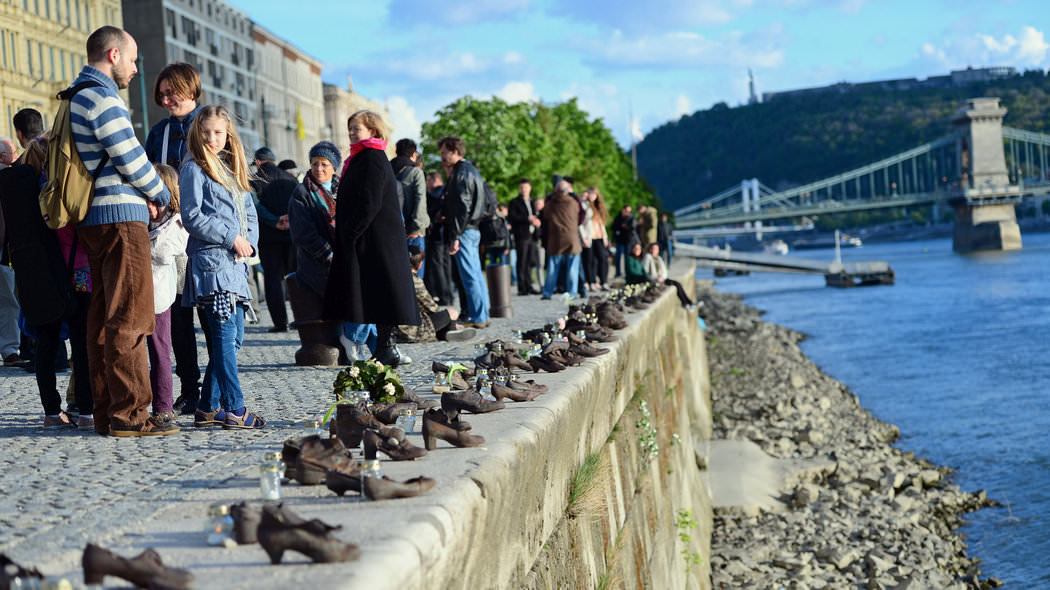The New York Times
By Lisa Schwarzbaum
Like many who share my hair texture and fondness for rugelach, I am the descendant of Jewish forebears who boarded boats in the first half of the 20th century to escape bad times for our people in Central and Eastern Europe. These intrepid emigrants took to the water, settled in America and built a Jewish-American culture of creative assimilation. I owe them my life.
Like about a third of the 120 or so fellow travelers with whom I spent seven nights on the Danube River last November, I boarded a boat called the AmaPrima in Budapest to float back to some of the same places so many of those same emigrants were — history has confirmed — lucky to leave behind. I was bound on a Jewish heritage tour, combining two growing travel trends: roots and rivers.
In my case, the combination was a special-interest option laid over a popular Danube itinerary that AmaWaterways has been offering since the company entered the river-cruise market in 2002. On the water, we were all in the same boat as it powered from the Hungarian capital of Budapest to Bratislava, Slovakia; Vienna, Linz and Salzburg, all in Austria; and, finally, Regensburg and Nuremberg, in Bavaria, Germany.
Each day, we shared the same abundant (nonkosher) meals and modest smartphone- and tablet-photography skills. Each night we repaired to our similar small, sweet, meticulously plumped cabins. (Our vessel could hold a maximum of 164 passengers.) And we all relaxed together each cocktail hour — mostly couples, mostly in their 50s to 70s, and mostly North Americans, along with some stray vacationers from England, Ireland, Australia and China — in the same pleasant lounge, with its big picture windows. Together, we admired the luxe bed linens, the Wi-Fi in every room, the bottomless free glasses of wine, the outdoor hot tub, the on-board gift shop, the minuscule hair salon and gym area, the all-inclusive pricing.
But when we stepped onto dry land in a different city each day, with local guides and buses synchronized to meet us, each traveler could choose between a Jewish heritage tour or a more standard city tour. (Independent exploration was also an option.) And we who had booked our trips in honor of our roots would, for a few hours, explore paths haunted by ghosts.
We would step into cemeteries with tumbled headstones. We would admire the very few synagogues that remain — so beautiful in Budapest, so stately in Vienna! — and listen to tales of the hundreds more destroyed. We would peer at old photographs and study rescued personal objects confiscated from the disappeared and today reverently displayed in glass cases.
Each day we walked the streets of a Jewish heritage now effectively devoid of Jews, and we listened as guides described to us what used to be and is no more, along with tempered reports of precarious Jewish life as it exists today. Then, as darkness set in, we returned to the boat to reunite with fellow passengers who had spent the day on the cruise line’s default tour of gentile European culture.

The Chatam Sofer Memorial, formerly the Old Jewish Cemetery, in Bratislava.Credit Akos Stiller for The New York Times.
For a week, under the friendly efficiency of the cruise manager, Dragan Reljic, we clinked aperitif glasses of Hungarian, Austrian or German liqueur in friendly toasts to historic beauty, both original and rebuilt following war after war, century after century. Then we freshened up for another dinner banquet, warmed by the pleasurable, high-end comforts of our Danube holiday.
This is the only way I can begin this story. The weight of your emotional baggage may vary.
Budapest is an eminently logical place to start the search. Draped on both sides of the Danube, the city is home, still, to one of the largest Jewish populations in Europe, shrunken as it is. Not insignificantly, the river is also wide enough — and the docking availability commodious enough — to handle the current explosion in river-cruise tourism. Not for nothing has AmaWaterways increased its fleet to 19 vessels in 2015, while the industry leader, Viking River Cruises, will run 60 river ships with 25 itineraries this year.
Along with a handful of others who would become my shipmates, I opted for an organized predeparture extension of two nights in Budapest before we embarked. That way, I could visit the imposing Moorish-style Dohany Street Synagogue, the largest active synagogue in Europe today. (It is, for that matter, the second largest in the world, after Temple Emanu-El in New York City.)
As substantial as Dohany Street Synagogue is, though, it paled in emotional resonance compared with the effect of Shoes on the Danube Bank, a memorial by the sculptor Gyula Pauer and the filmmaker Can Togay. This simple, quietly heartbreaking permanent installation of 60 pairs of empty shoes, cast in iron on the Pest side of the Danube embankment, is a memorial to thousands of victims of Hungary’s own fascist Arrow Cross, in 1944-45. Men, women and children were relieved of their footwear, lined up and shot dead so that their bodies would fall into the Danube and wash away. Art puts our feet where they once stood.

In the Stadttempel synagogue in Vienna, with the bar mitzvah of Nathan Baranow taking place in November. Credit Akos Stiller for The New York Times.
Click HERE to read the full article.








